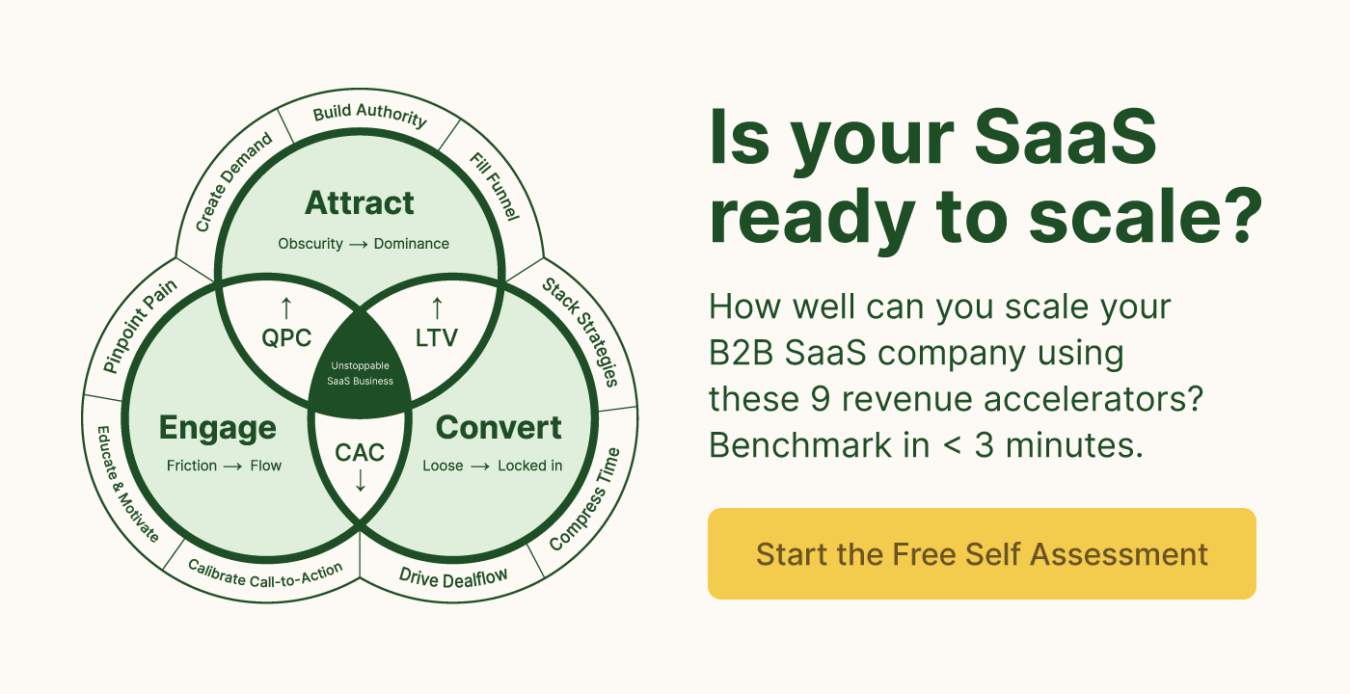Why Most B2B SaaS Lead Magnets Don’t Drive Leads (and The Solution)
Last updated: October 3rd, 2024
Many B2B SaaS companies we talk to struggle to drive leads with their lead magnets.
For prospects to convert into customers, they need to feel a sense of certainty that the monetary and time investments involved with adapting a new system into their business will be worth it. As such, B2B lead generation and nurturing takes time and many different touch points along the path to a sale.
This is what makes lead magnets such an essential part of the digital marketing tool belt for B2B marketers. But most of the time when we begin working with B2B SaaS companies, they either don’t have a lead magnet at all, or they have one that’s not particularly effective at generating leads from their target audience.
As a result, if website visitors don’t sign up for a trial or demo, the SaaS company has no way of:
- Knowing who specifically visited their website
- Communicating with those people after they leave
- Telling who was engaged versus who wasn’t
So how do you create a lead magnet that is compelling enough prospects will hand over their contact information to access?
To help you identify why your lead magnet isn’t driving leads, we’ll discuss some of the most common lead magnet mistakes that kill conversions and give you the step-by-step blueprint we use to drive leads.
Want to learn more about the lead magnets we create for our B2B SaaS clients? Check out our Customer-Content Fit workshops. If you’d like to learn more about our services, get your Free Marketing Plan here.
5 Mistakes to Avoid with Your B2B Lead Magnets
Here are the three most common mistakes SaaS companies make regarding lead magnets that result in low lead conversion rates.
1. Not Having One At All
There are still some SaaS companies that do not offer a lead magnet.
For example, they may be focused on the awareness (top of funnel) and purchase (bottom of funnel) stages in their content and ads, but fail to dedicate resources to developing offers for people in the consideration (middle of funnel) stage.
And with no places on the key pages of their site to invite potential customers to learn more without signing up for a trial or demo, they miss the opportunity to formally connect with visitors who are in the consideration stage and are actually interested in what they have to offer.
2. Offering the Wrong Type of Lead Magnet
The volume of free content available has scaled exponentially over the past few years, and customers can find thorough answers to virtually any question using ChatGPT or Google.
Therefore, most people won’t provide their email address to access gated content when they can find the same information elsewhere for free.
Here are a few of the common lead magnets we see B2B SaaS companies use and why they often fail to convert customers:
- Newsletters: Most professionals stay up to date with industry news on social media. If you plan to offer a newsletter lead magnet, it must provide unique, proprietary information that prospects can’t find elsewhere.
- Webinar Recordings: These lead magnets often fail to work for two reasons. First, most prospects can usually find a free video that answers the same question. Additionally, busy executives have limited time – many won’t even read an email that’s more than a few sentences long. So asking them to give you 90 minutes of their time is often a stretch.
- White Papers: Many white papers fail to convert traffic into leads as prospects can usually find the same information in more concise packaging elsewhere for free. Additionally, white papers are often boring. Even though you’re targeting professionals and executives, they’re still human and will become bored reading dry text.
Instead, we find that the most successful lead magnets provide the most effective solution to the reader’s problem in the least amount of time.
The four types of lead magnets we’ve found to perform best in the B2B SaaS space are mistakes lists, cheat sheets, case studies, and calculators (more on this below).
3. Misalignment Between The Lead Magnet And The Buyer Journey
Your lead magnet may provide valuable information that your prospects need, but it might not be the information they’re looking for when they first find your lead magnet. Your lead magnet must solve the right pain point at the right time.
That’s why audience research is the first step of every client engagement. We use this research to determine which problems and questions arise at each step of the journey and then create lead magnets to answer them so that we always present prospects with the right lead magnet at the right time.
Additionally, some forms of lead magnets are best suited for different stages of the buyer journey, so we use the buyer awareness matrix to determine the best lead magnet format. For example, product-aware prospects would likely appreciate a case study as they begin evaluating different providers, whereas problem-aware prospects would likely prefer a checklist as they work towards better understanding the problem or trying to solve it themselves.
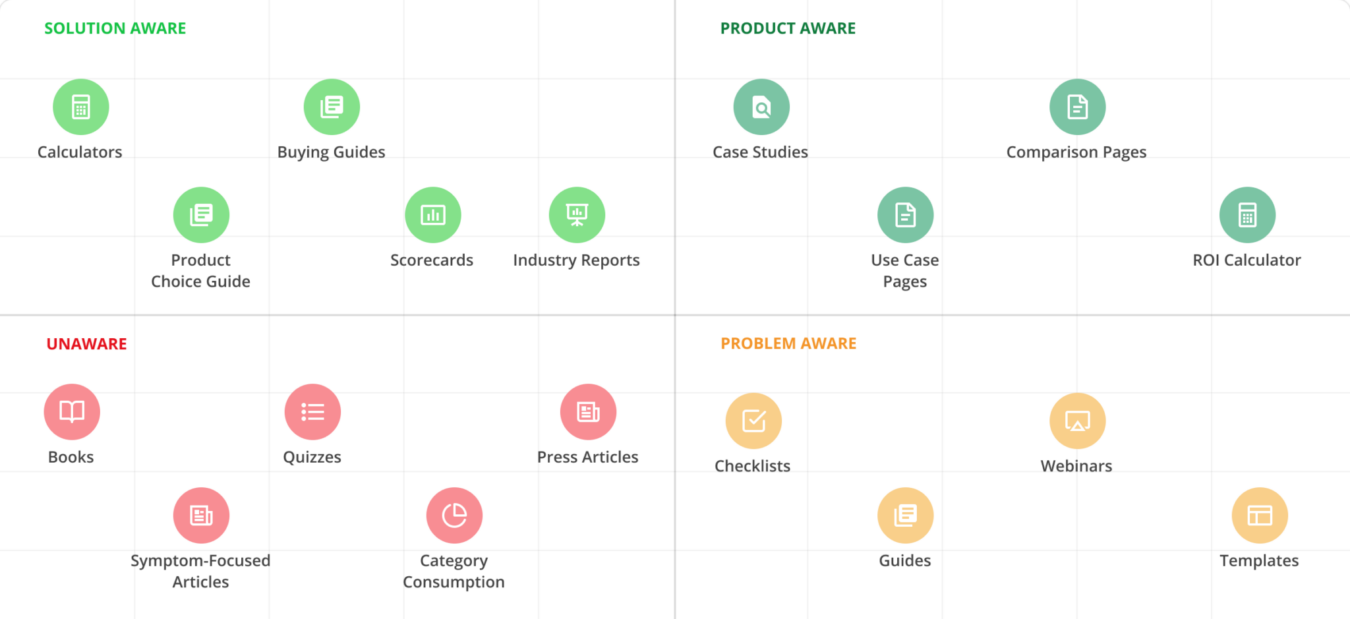
4. Not Actively Promoting Your Lead Magnets
Many SaaS companies put their lead magnets somewhere on their site with the hope or assumption that people will opt in.
In some cases, SaaS companies send them to their email list or post them on social media, but these forms of promotion provide limited reach. First, most branded social media accounts receive minimal organic engagement, and you can’t re-engage prospects through email if they haven’t yet provided their email address.
We find that running remarketing ads is a more effective strategy to promote lead magnets and re-engage prospects – including those who haven’t yet provided contact information.
5. Failing To Nurture Leads
A prospect’s interest in both your brand and solving their pain point is highest when they download your lead magnet, so don’t wait to communicate with them.
If you wait a week to send them a follow-up resource, they’ll likely forget about your brand, or they will have already done their own research (likely through your competitors’ content) to find the answer to their next question.
Either way, you’ll lose that prospect to another competitor and you’ll see a low lead to pipeline conversion rate.
To solve this problem, anticipate your prospect’s next questions and pain points and then give them access to additional resources to address those problems.
By answering each question at the right time, you’ll efficiently lead them to the point of sale and close the deal.
What Makes an Effective Lead Magnet for B2B SaaS?
We’ve talked about this before, but the acronym we use as a guide is:
- S – Simple
- A – Actionable
- G – Goal Oriented
- E – Easy to Consume
Perhaps with the exception of case studies which are at times longer-form (but still have their place as we’ll describe below), mistakes lists, cheat sheets, and calculators all fit this criteria.
And they can be useful for both you and your prospects.
For example, mistakes lists and cheat sheets can help prospects solve real problems in their businesses by creating awareness of things they’re getting wrong and providing them with actionable tactics or strategies to make improvements.
These tools can also help teach prospects how to buy or show them the value of your product.
For example, an ROI calculator can demonstrate the tangible monetary outcomes that could come as a result of using your product — and do so based on each individual prospect’s own business metrics.
An effective lead magnet also addresses the correct stage of the buyer awareness matrix in that it provides the appropriate solution for their current stage in the buying process. For example, someone just learning about a problem might appreciate a quiz that points out the root of the challenges they’re facing whereas someone at the end of the buying journey evaluating different products likely wouldn’t find the same quiz helpful.
It’s also important to consider the person within the buying committee who will be using your lead magnet. For example, a technical daily user might appreciate an actionable template whereas a check signer will likely prefer a white paper or data that illustrates the ROI of the solution.
Our End-to-End Lead Magnet Approach for B2B SaaS
Once you have a lead magnet, how and where you place it in the buyer journey significantly influences your conversion rate. Here’s our end to end approach to promoting and positioning lead magnets.
Ad Campaign
One of the biggest challenges with lead magnets is discoverability, as landing pages typically don’t rank very well in organic Google search results.
We solve this problem by running paid search or social ads.
In our experience, paid social ads tend to be most effective because lead magnets are designed to target prospects higher up in the funnel. Therefore, paid social campaigns can be a great, low cost strategy to get in front of prospects when they’re interested and exploring solutions to their pain point.
Paid search can also be effective, though it tends to be more costly. This is because paid search is a high intent channel, whereas most people downloading lead magnets are still in the research and discovery phase and aren’t yet high intent prospects.
Therefore, if you choose to promote your lead magnets through paid search, you must have tight budget controls. We recommend using paid search as an add-on to existing bottom-of-funnel campaigns.
As for the ad copy and creative, visually demonstrate what the prospect will receive (e.g., if it’s an ebook, show a page of an ebook).
If the visual isn’t congruent with what prospects will receive when arriving on the landing page, they’ll likely immediately close the window, and it creates a negative first experience with your brand.
Landing Page
We often speak with SaaS companies that do an excellent job of driving qualified traffic, but still struggle to convert them into leads. This is usually due to an issue with the landing page. Therefore, here’s how we optimize landing pages to maximize conversions and technical suggestions to ensure it’s user friendly.
If you’re unsure where to place your lead magnets on your website, we recommend putting them in a resources section.
Another common debate is whether or not you should gate your landing page.
While there’s a compelling argument for leaving lead magnets ungated to build relationships with prospects, at least some lead magnets should be gated so that you can remarket to prospects in the future.
Otherwise, you won’t have a method for converting traffic into leads and nurturing them through the buyer journey.
If you’re unsure which lead magnets to gate, consider the lead magnet’s value and competition. For example, if you have an ROI calculator, and many of your competitors also offer a similar ROI calculator, it’s probably best to leave it ungated and allow anyone to use it.
On the other hand, if you have proprietary research that answers critical questions your prospects need, it might be a good idea to gate that content.
When in doubt, test gating your lead magnets and see what works best. You can always choose to un-gate it if you have a low conversion rate.
Structuring The Landing Page
An effective landing page communicates the value prospects will receive if they download the lead magnet.
State what prospects will learn and specific pain points the lead magnet will help them solve. You can also support it with proof points such as testimonials and even customer brand badges.
Another tip is to show a preview of the lead magnet so prospects can visually see what they’re getting as not all prospects will read the text on the landing page. For example, if it’s an ebook, show them a preview of the first page.
The more clearly prospects can visualize what they’ll receive and understand its value, the more likely they are to convert.
Finally, ensure the CTA to download the lead magnet is well optimized. Here are a few tips:
- Make the form itself large and clear: If prospects can’t find it, they’ll bounce.
- Use as few fields as possible: We believe in a progressive profiling approach – you can get more information on the lead later in the funnel, but you can’t get any information on them later if they never fill out the lead form. We typically request name, email, and maybe job title to send them appropriate content in the nurture sequence.
If you want more information, we have a separate guide to structuring SaaS landing pages that delves deeper into optimizing your landing page for conversions.
Thank You Page
If prospects land on a blank thank you page, they’ll likely close it and leave your website altogether.
Instead, use the thank you page to deepen your brand’s relationship with each prospect.
First, the thank you page should tell prospects when they’ll receive the asset.
We actually send the asset to prospects about six minutes after they download the lead magnet so that they take those next few minutes to watch a video on the thank you page. This video could be a short demo of your product or a testimonial video to further build trust.
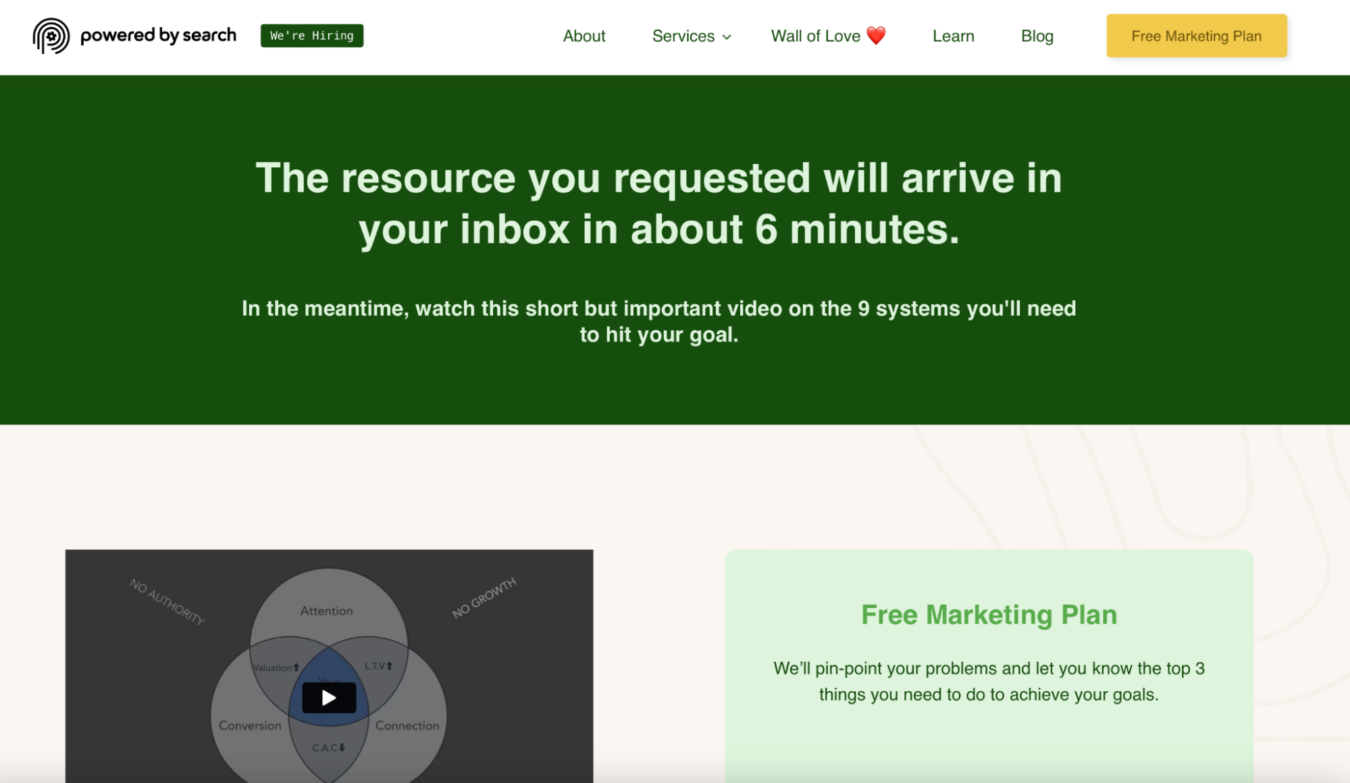
Below the video, we also have written text outlining the next steps in the buyer journey below the video.
Finally, add a bottom of the funnel call to action to schedule a demo or call for prospects that are ready to take the next step.
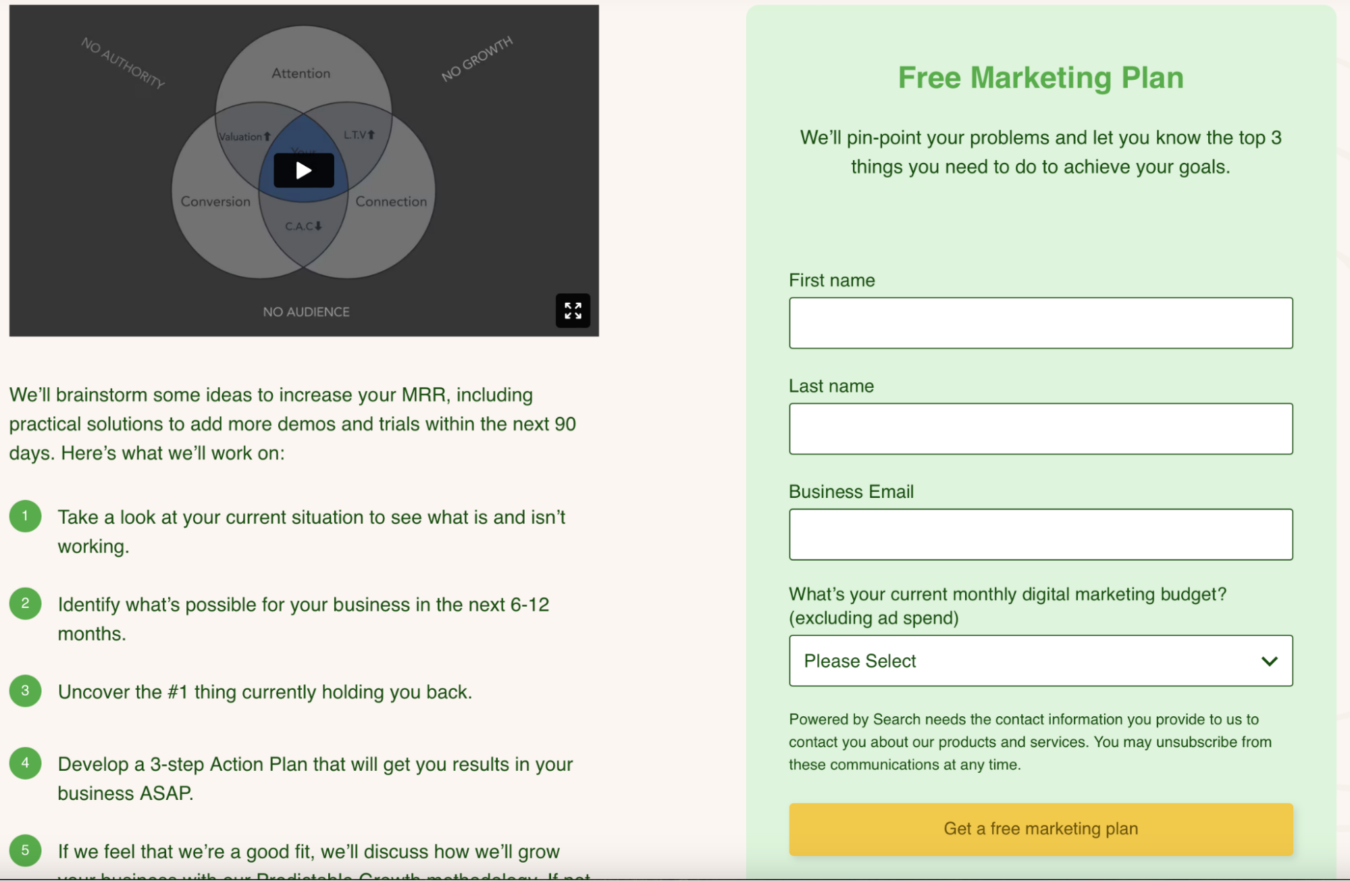
Nurturing/Remarketing
The purpose of a lead magnet is to capture someone’s email address so you can remarket to them later and efficiently move them through the buyer journey.
So after sending the lead magnet, set up an automated nurture sequence that provides the next step in the process. For example, if the lead magnet was a mid-funnel asset, the nurture email should provide a bottom of the funnel asset. Once prospects reach the bottom of the funnel, the next step is to get on a call or schedule a demo.
We have a detailed MQL email nurture sequence playbook that provides more actionable information on how we structure these emails and the send times we’ve found are most effective.
B2B SaaS Lead Magnet Example: A Product ROI Calculator For CartHook
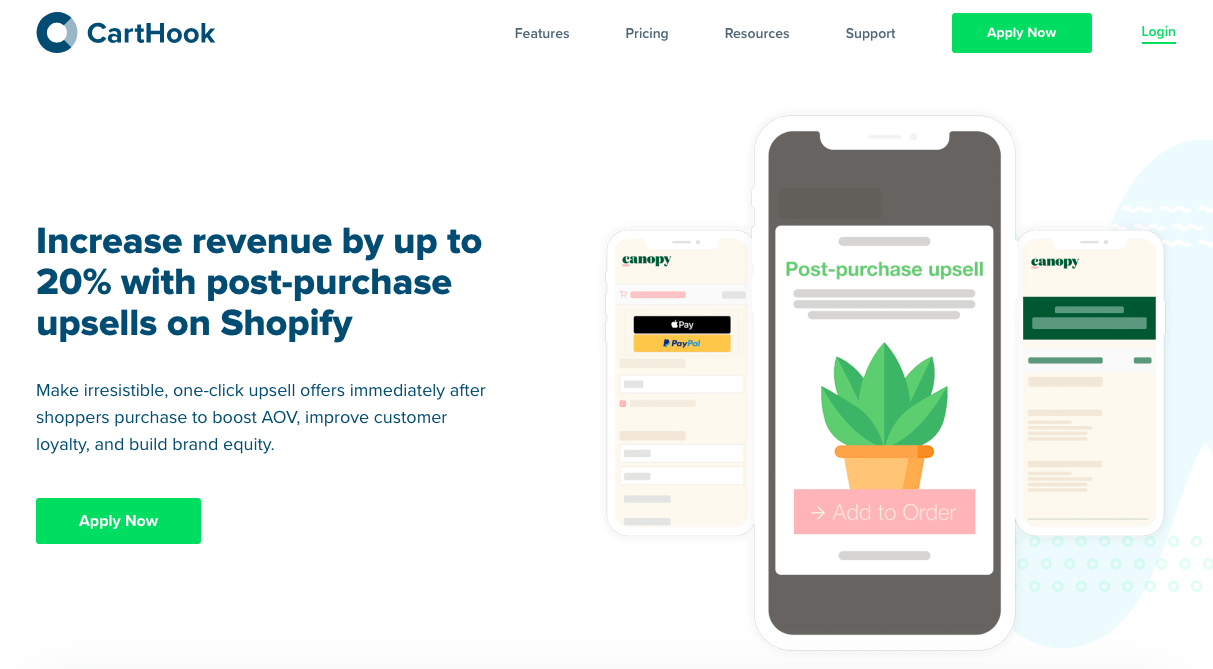
We developed the idea to create an ROI calculator during our two onboarding workshops with the CartHook team. CartHook’s software helps Shopify stores increase revenue via upsells by showing shoppers one-click additional offers once they’ve completed a purchase.
Note: Learn more about our onboarding workshops in our article on customer-content and journey-offer fit.
During our workshops, we asked their different departments questions about what keeps their customers up at night. The things that stood out were:
- Recurring revenue
- Costs of goods sold
- Average order value
- Rising CAC on Facebook Ads
CartHook’s product can’t do much to affect their costs of goods sold or rising CAC on Facebook, but it can make a direct positive impact on revenue and average order values — so these were the metrics we decided to focus on for our calculator.
So why did we choose a calculator instead of a case study or a cheat sheet?
Why We Chose an ROI Calculator
Let’s revisit our list of go-to lead magnet ideas for B2B SaaS:
- Case Studies
- Cheat Sheets
- Mistakes Lists
- Calculators
With great customers like Native (which sold to Proctor & Gamble for $100 million in late 2017), we certainly could have done a case study showing the lifts in revenue Native had from using CartHook. But the function of a case study is to prove legitimacy, and based on their feedback, CartHook typically already has a good reputation with their best-fit prospects. People know and trust their brand, so we decided that creating something interactive would be a better fit.
A mistakes oriented piece of content wouldn’t have made sense because the mistake that most Shopify merchants make is not considering upsells as a viable path for increasing average order value. So it would have been a very short piece of content. If it could be summarized in a tweet, why bother creating a PDF around it?
Lastly, because the only alternative that a Shopify merchant has is the custom coding process of building their own upsell tool, a cheat sheet around that wouldn’t have made sense either.
So the only logical choices were a case study or a calculator, and we chose the calculator because of the interactivity that allows a prospect to see their own situation within the business model and context of the SaaS tool. It also allows room for pessimistic, realistic, and optimistic outlooks (controlled by the prospect).
How We Created and Promoted It
CartHook is unique in that they use an application system to qualify prospects, rather than the traditional method of letting anyone sign up for a trial or demo. So the first thing we did was ask their sales development person—who actually does their demos—what qualification questions they ask and how they decide who they want to work with.
She said they ask how much their sales were last month and in general on a monthly basis, and follow up with what kind of product they’re selling to understand if it’s a sufficient average order value to where it would make sense to work together.
For context: CartHook’s business model is to take a small percentage of their upsell revenue, so if revenue or average order value don’t meet a certain threshold, it doesn’t make financial sense to work with them.
So we chose to go with “sales last month” and “AOV” (average order value) as the inputs for our calculator. This would serve multiple purposes, both qualifying prospects and showing prospects how much additional revenue they could be making with CartHook (based on the average results seen by their customers).
In addition, these are metrics that every eCommerce store owner either knows or can easily access, which were important criteria in choosing them as inputs. If we asked for more obscure information, the calculator would be much less useful and fewer people would end up using it.
Lastly, we decided to let prospects indicate their level of experience with upselling, because the CartHook team emphasized the varying levels of experience and perspectives that prospects have around upselling, and we wanted to take that into account.
As a result, we created this calculator where these inputs could be entered directly on the page.
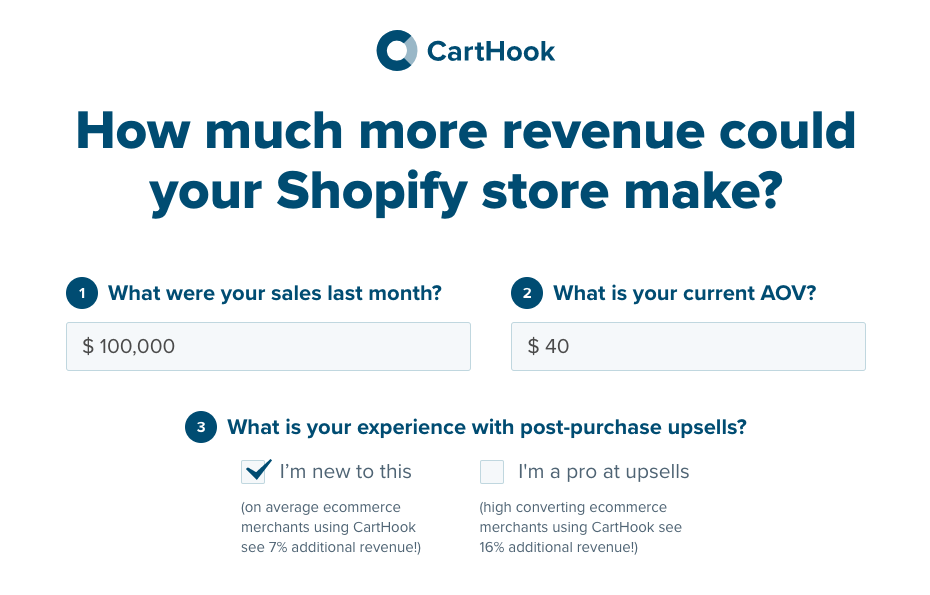
For the headline, we did three specific things:
- Phrased it as a question (a practice we’ve seen the best results from — our brains have trouble ignoring questions)
- Focused on what they care about most (how much more revenue they could make)
- Called out specifically who it’s for (if you’re a Shopify store owner, this is for you)
Once prospects enter their numbers, they would simply submit their name and email in exchange for the results.
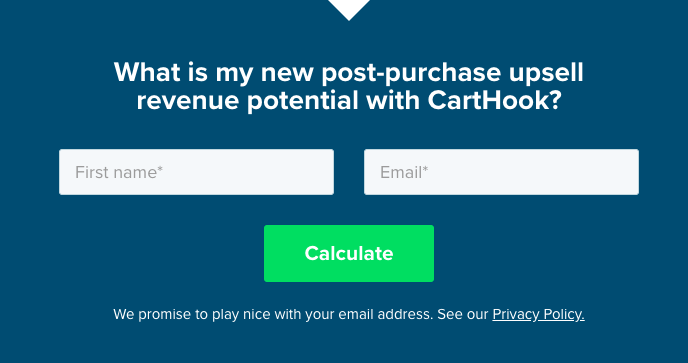
Upon submitting the form, their results pop up on the page with the calculation of potential revenue gains if they were to use CartHook:
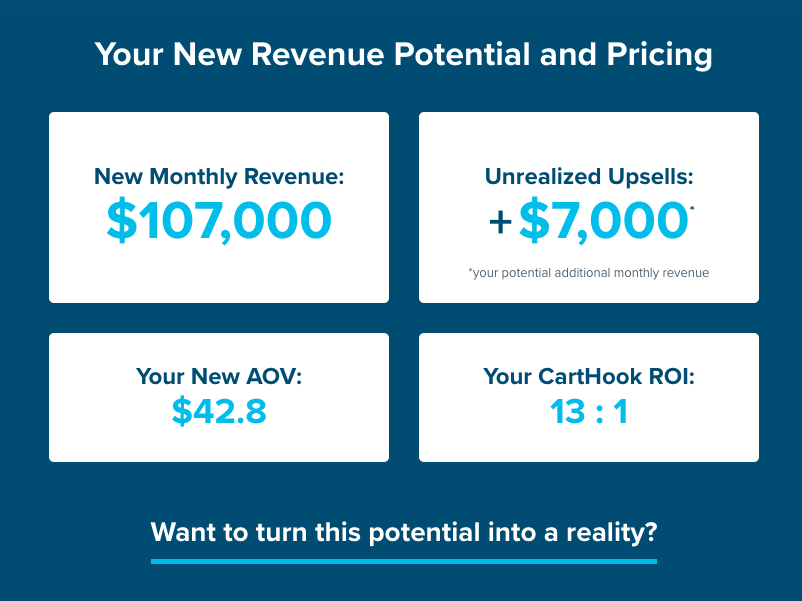
From there, the same application form is used below with the prospects name and email automatically populated:
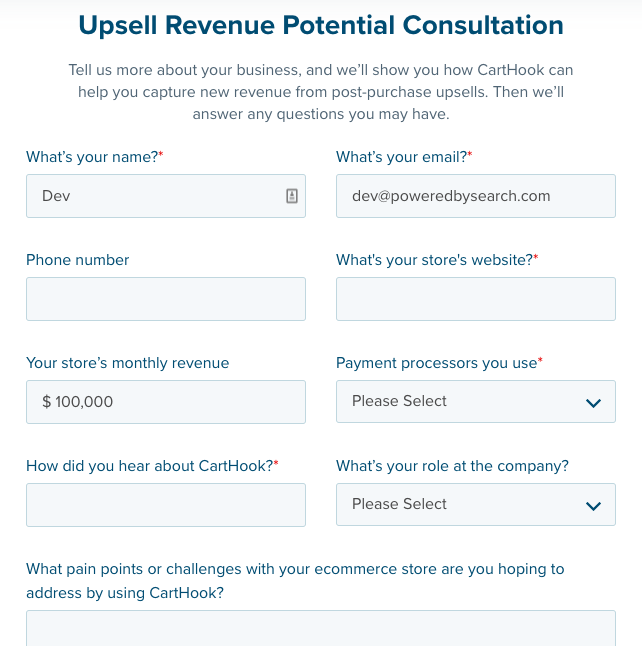
Once this was created and live on their site, we started phase one of the promotion process, running ads to it through LinkedIn, Google, and Facebook to test for customer-channel fit. Then we deployed our Boomerang Method for remarketing to prospects who started the application process but didn’t convert.
Our next phase will be to start directing traffic to the calculator from the key pages of their site such as their pricing, features, and how it works pages, and we’ll add it to the sidebar of their blog as well.
Thus far, the calculator has received 80 results requests. That’s 80 new marketing qualified leads they wouldn’t have otherwise had.

The Next Step To Improve Your B2B SaaS Lead Magnet
When lead magnets are created thoughtfully, with empathy for those who they’re built for, understanding what is actually interesting and useful for prospects, they are one of the most effective ways we’ve found to connect with the prospects in the middle of your sales funnel.
To not have a lead magnet, or to have one that doesn’t generate leads or that you don’t actively promote, is a missed opportunity to engage with prospects who are interested but not yet ready to buy.
But if you choose the right type of content, and you actively promote it through your website and the places your prospects spend time online, you can steadily increase your pipeline by marketing to qualified leads.
Want to learn more about the lead magnets we create for our B2B SaaS clients? Check out our Customer-Content Fit workshops. If you’d like to learn more about our services, reach out for your Free Marketing Plan.
What you should do now
Whenever you’re ready…here are 4 ways we can help you grow your B2B software or technology business:
- Claim your Free Marketing Plan. If you’d like to work with us to turn your website into your best demo and trial acquisition platform, claim your FREE Marketing Plan. One of our growth experts will understand your current demand generation situation, and then suggest practical digital marketing strategies to hit your pipeline targets with certainty and predictability.
- If you’d like to learn the exact demand strategies we use for free, go to our blog or visit our resources section, where you can download guides, calculators, and templates we use for our most successful clients.
- If you’d like to work with other experts on our team or learn why we have off the charts team member satisfaction score, then see our Careers page.
- If you know another marketer who’d enjoy reading this page, share it with them via email, Linkedin, Twitter, or Facebook.
